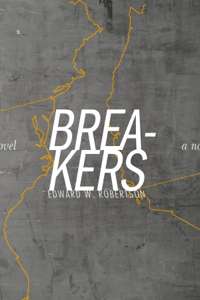As self-published authors, we don’t talk about failure enough.
Tobias Buckell recently wrote a piece about “survivorship bias” and its relation to self-publishing. He argues that the problem with self-publishing is we only hear from the winners. The survivors. When all you hear about are the successes, your view of how easy it is to succeed will be wildly distorted. His argument is based on this great article from You Are Not So Smart, which you should totally read.
Done? Yay. In response to Buckell, authors on KBoards have raised the interesting counterpoint that literally every single trad-published author is a survivor, meaning their whole perspective is skewed. Which.. is tough to argue with. On the other hand, I don’t think it nullifies his point.
A lot of people are self-publishing. Very few of them do well at it. And you almost never hear–and thus learn–from the failures.
Well, I named this blog Failure Ahoy for a reason. I think failure is awesome! Failure is what happens when you try. Fail enough, and you might even succeed. With that in mind, I’m going to post more about failure. I want to make it okay to suck. I have failed in many ways along my self-publishing journey, but there is no more stark or hilarious an illustration of that failure than my first covers. Man, I might need to brace myself here. Like with tequila.
Okay, ready if you are. Let’s dig up some corpses.
COMMENTARY: Okay, this one isn’t really a corpse (don’t worry, they’re coming). It’s just the wrong cover for the book. I like it a lot, though. The way the text is broken up and the subtle map is very cool. Awesome concept. But what does this cover say about the book inside it? Looks literary, right? Perhaps something involving sidewalks? And thus a new genre is born.
But my book’s about the end of the world. Viruses and aliens. If my book were more like The Road and less War of the Worlds, I think this cover would be a great fit. However, this book came out during the Golden Age of Amazon Select, which I used to get rolling after 12 solid months of self-publishing failure. As I was planning and executing my free runs, I noticed a couple things.
First, it was kind of hard to get this book listed by the major freebie sites. Second, when my book was free, it didn’t do so well compared to other indie titles in my genre. Yet after its free runs it sold pretty well, relatively speaking, and I was getting some good reviews. After a couple months of carefully comparing my book to others like it, I thought I might have an all right book, but I was pretty sure my cover wasn’t properly expressing the genre.
Breakers, Cover #2 – May 2012
COMMENTARY: Take two. My giveaway numbers for my first three free runs with Cover #1 were 1000 copies, 1600, and about 2000. In its first three months, aided by those free runs, it sold about 800 copies.
When I first went free with this one, my second and current cover, I gave away 25,000 copies. In the 30 days following, it sold 2765 more (Select no longer works like this, unfortunately). Twelve months later, it’s sold over 20,000.
Those sales have also been aided by two sequels, a permafree novella, about 200 more reviews on book one, and plunging into the non-Amazon markets, but I think it’s pretty clear the second cover was much better at driving sales. Articles like this–“
The Real Cost of Self-Publishing a Book“–like to play up the costs for cover art, editing, etc. That article says low-end covers start at $150 and can run as high as $3500.
This isn’t wrong, exactly, but I got this cover for $75. I was still very poor at that point, so I spent a lot of time hunting down every cover artist who charged $100 or less. This artist had primarily done YA and covers involving women in snazzy dresses. Not really what you think of when you’re looking for someone to put together a cover for a post-apocalyptic novel full of violence and aliens, but after poring over her portfolio, I thought she could do it.
This was probably the first time I had been right about anything. But it took me three self-published novels, several collections of short stories, and 15 months to reach the point where I had the resources, experience, knowledge, and motivation to sort through these artists, find the one I liked best, and hire her.
COMMENTARY: …and this was how it all started. I made this cover myself, and I’ll give myself credit for this much: I didn’t try to do too much with it. I knew my talents as an artist (none) and didn’t try to overreach.
And that’s about all I did right. Interesting choice on my part to leave the base of the trunk hanging there above the line. Was I unable to draw a couple plain white lines to connect them? Apparently.
I can’t remember exactly what I was thinking, but I was pretty satisfied with this cover at first. I thought it was kind of iconic. If nothing else, you couldn’t beat the production cost ($0). Also, in early 2011, there weren’t a lot of great self-published covers out there. It didn’t look as bad then as it does now. Most of all, it simply felt incredible that, after ten years of pursuing agents and editors, one of my books was finally for sale.
But enough contextualizing. This is not a good cover. Any fool can see that, but apparently I wasn’t your average fool. A part of me knew I’d need to do better once I could afford it, but I thought the writing inside the book was good enough to overcome its humble cover. Ha! Ha! Ha ha ha ha ha!
I sold about 100 copies of this in 2011.
The White Tree, Cover #2 – February 2012
COMMENTARY: I still like this cover. I think it’s pretty and captures the mood of the book. It was within my budget ($65) and paid for itself many times over. Thanks to it, and beneficial, now-defunct Select algorithms, I sold maybe 2000 copies of this book in 2012.
With that in mind, I will now reveal the lesson I was only just beginning to take to heart in 2012. This wisdom is so deep and hard-won that I’m not sure anyone else in the history of self-publishing has ever before expressed it:
SPEND SOME MONEY ON YOUR GODDAMN COVERS
I am deeply sympathetic to anyone working with a limited budget. I know what it feels like to make the reckless decision to spend your money on feeding yourself instead of buying a cover for some pipe dream self-publishing venture. But the good news is the market’s matured. It’s 2013 and you can get amazing pre-made covers for
as little as $30. No matter how broke you are, find a way to save up that $30.
Incidentally, I might still be using this cover except I wasn’t happy with the way the cover for the sequel turned out. That meant redoing both of them.
The White Tree, Cover #3 – December 2012
COMMENTARY: This cover and
the one for its sequel cost a whole bunch. Epic fantasy illustrations will do that to you.
I felt okay shelling out for a third version of the cover because I figured a) it would easily pay for itself long-term, and b) I’d never have to upgrade this series again. It’s been close to six months and I probably just broke even on them. Even with the new covers, these books only sell a fraction as well as my Breakers novels. I guess covers aren’t everything!
COMMENTARY: HAHAHAHA
Now, in my defense, I was using this as a placeholder while my real cover came in, and it was only live for a week or two, but…no, you know what, that’s enough. This is what happens when you have no money and no experience self-publishing and you think the words inside are all that matters.
This is what failure looks like.
The Roar of the Spheres, Cover #2 – March 2011
COMMENTARY: The one cover I spent real money on in 2011. This cover cost $125 and I still think it looks great.
But apparently the world disagrees with me, because this is my worst-selling novel by leaps and bounds. So far, I have sold 3 copies of it on Amazon this month. It is May 29th.
To put it another way:
See that amazing downward line between July 2011 and February 2012? The reason that line isn’t jagged like the other parts of the graph is because it sold zero Amazon copies for six straight months.
Its failure to sell despite a sweet new cover is the main reason I didn’t pay to redo the cover on The White Tree for nearly a year. I had “learned” that a new cover doesn’t guarantee a damn thing. And it doesn’t, necessarily–but if you learn how to get your book in front of shoppers, which I had no clue how to do at that point in time, it can make all the difference.
But I wasn’t in position to learn better until the Select program allowed me to get my books in front of readers. It was only then that I started to get a feel for the impact a cover can have on purchasing decisions. And to imagine how my books look when they’re jumbled up with every other title in the store. How critically important it is to make them stand out from the crowd–while at the same time telling a potential reader, “Hey, this is a story about X. If you like stories about X, you might like this book.”
Oh, and for the record, I think Spheres needs a new cover. I love this one, but as with my first Breakers cover, it doesn’t capture the genre. Or maybe I really am the only person who likes it. There’s no guarantees I’m done failing with covers yet.
If I can ever convince myself it’s a good enough book to bother with, I’ll probably try something with a spaceship on it. That last sentence is ironic but also 100% true.
CONCLUSION
Don’t do what I did?
Seriously, that’s the immediate takeaway here: your first covers don’t have to be perfect, but sweet fancy Moses, make sure they’re professional. These days, “professional” doesn’t have to cost any more than $30-60. Later on, if you’re making some sales and feel more confident investing $150-500+ on a cover, you can upgrade. In all honesty, it won’t hurt your career to have a bad cover–because you have no career yet–but it will sure hurt your feelings to wonder why no one wants to buy the book it represents. Go without sales for long enough, and you might give up.
It’s the middle of 2013, and I feel like “Pay for a decent cover” is such widespread and commonsense advice that it’s hardly worth posting about. But I don’t know, maybe there are still lots of people out there it might help. We rarely hear from the people struggling to sell a single copy. If you see your stuff in my early covers, a small investment could make a big difference.
If nothing else, the ones I did myself are pretty funny.
But there’s also this. Some people have the sense, talent, and up-front funds to succeed immediately. But I think most of us are pretty crappy when we start out. It’s virtually guaranteed.
Meanwhile, if all you’re hearing about are the mountains of gold everyone else is making, and there’s not a word spoken about all the junk those former failures went through until they started to succeed now and then, it can make you feel pretty bad.
The real takeaway is that learning to self-publish is a process. In hindsight, the lessons and solutions look obvious, but when you’re mired in the middle of it, it’s never easy to know where to go next.
I’ve learned a few things about covers, but in other areas of the game, I continue to fail mightily. I look forward to talking all about it.













Leave a Reply